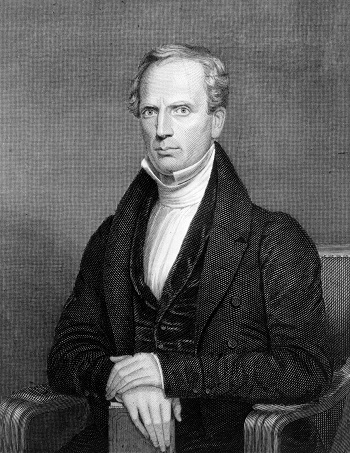
Jefferson County, New York, was the location
where Charles G. Finney began his ministry
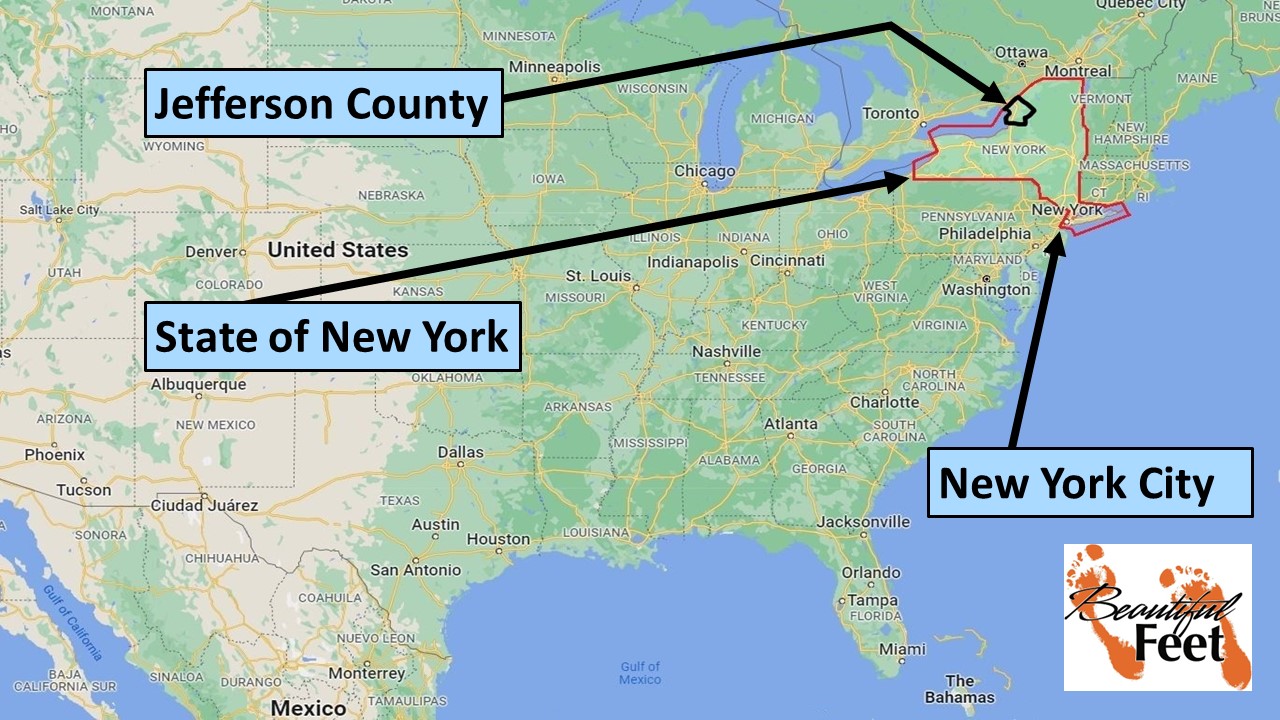
Jefferson County, New York, is outlined in black
Preliminary Reading
To help with the historical context, we recommend reading about the revivals that had been previously occurring in other New England states. Those revivals can be read with these accounts:
► 1790-1840 Second Great Awakening
► 150 New England Revivals (1797 – 1814)
► 1815-1840 Upstate New York Revivals
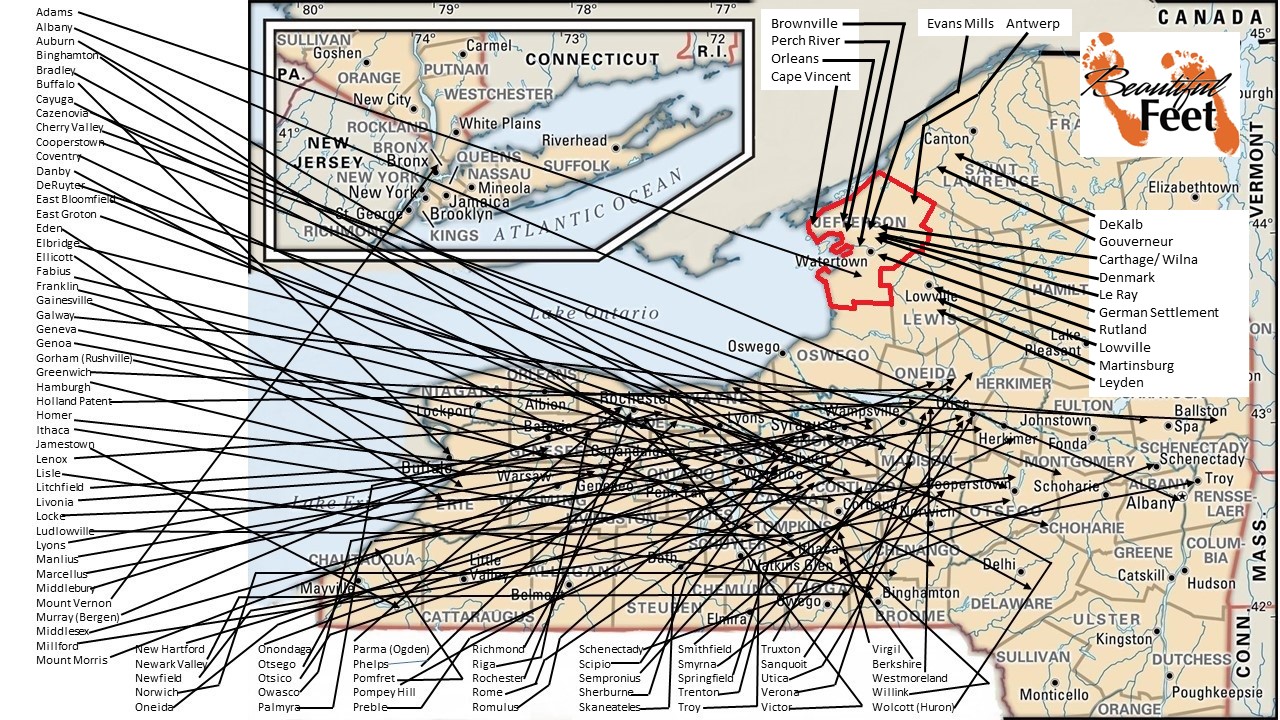
State of New York: Jefferson County is highlighted in red. The black lines indicate locations where the revival spread over the next decade. The area became known as the “Burned-Over District.”
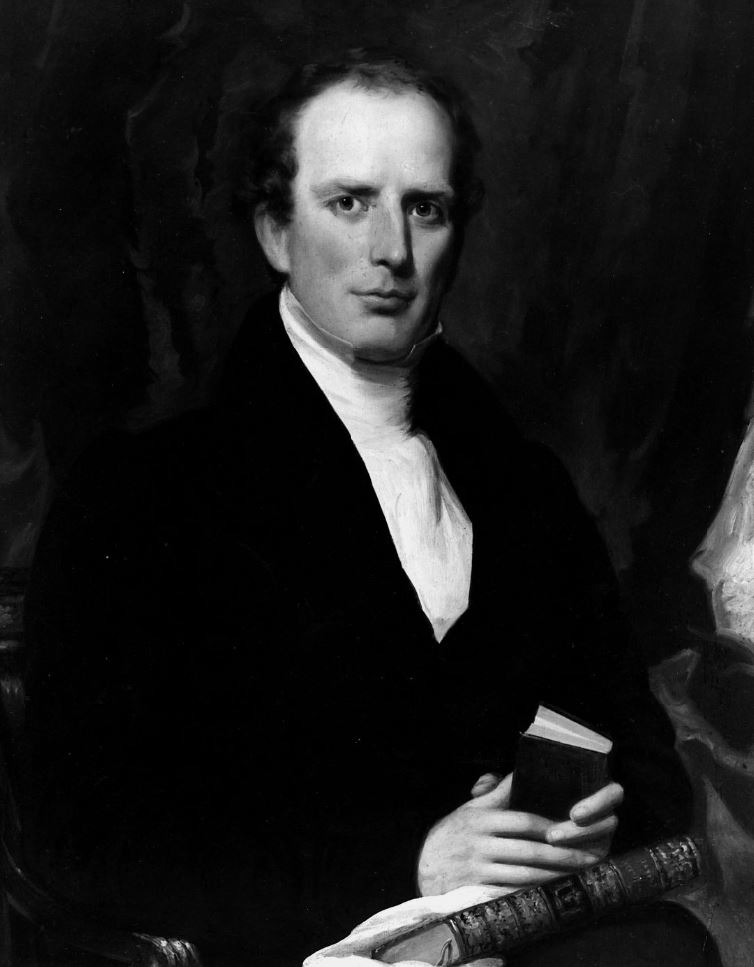
Charles Grandison Finney – Father of modern revivalism
and the leading figure of the Second Great Awakening
Introduction
Charles G. Finney (1792-1875) was raised in Oneida County, New York, which at that time was still considered a wilderness. There were no Sunday Schools or opportunities for religious education, leaving the people with no religious convictions. The few ministers that passed through were described as uneducated, and laughably so.
Finney’s conversion in 1821, at 29 years of age, was extremely dramatic, and was accompanied by a powerful baptism of the Holy Spirit. You can read about it here. Immediately following his conversion, he abandoned his promising career as a lawyer, and by 1824 was ordained as a Presbyterian minister. By 1827 he had “risen to national prominence as the most effective evangelist in the West.”
Being supported as a missionary by the Female Missionary Society of Oneida County, New York, Finney’s first assignment was work in Jefferson County, New York.
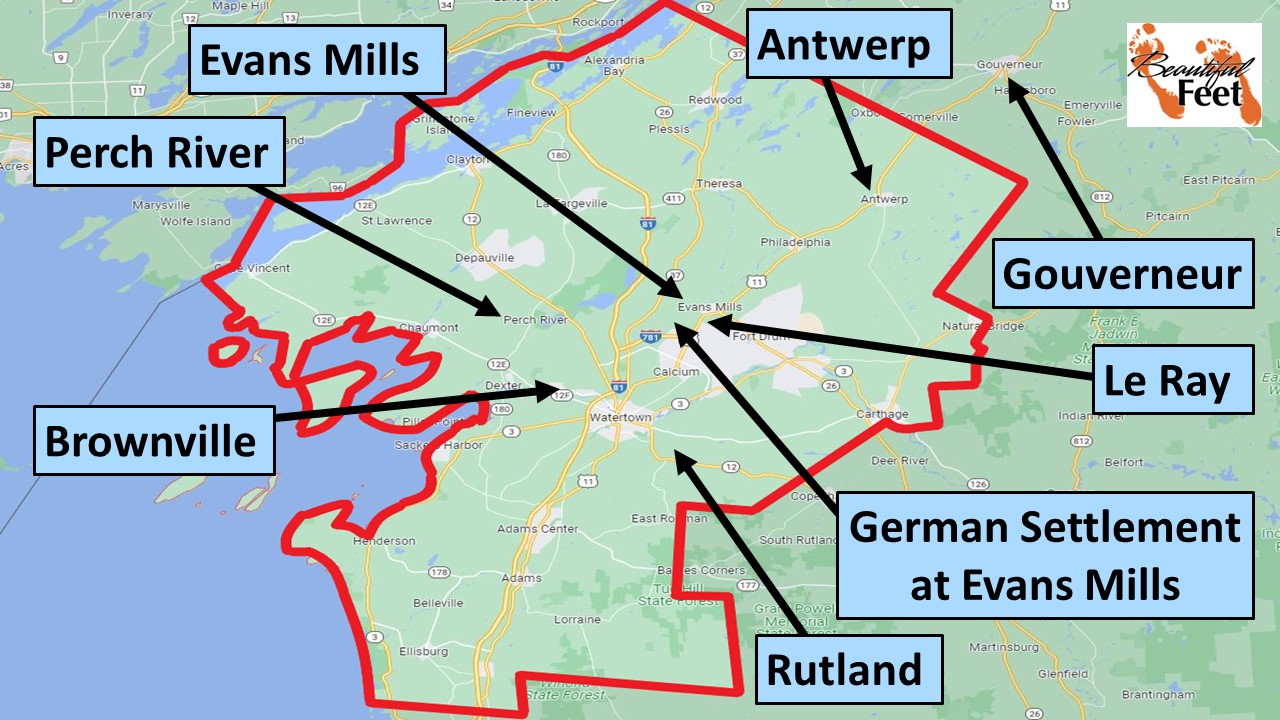
Jefferson County, New York. This shows a few of the locations where the revivals occurred during 1824-1825.
Simultaneous Revivals
This revival account is focusing on the revival that occurred in the German settlement outside the town of Evans Mills. In the town of Evans Mills there was a Congregational Church (later becoming Presbyterian) and a Baptist Church. Though these were organized congregations, they were without a church building, and would meet separately on alternate Sundays in the schoolhouse. Finney’s first sermon was in this schoolhouse and within a few weeks the revival in the area began.
Divided His Time Between Evans Mills and Antwerp
Finney’s first sermon in Evans Mills was on the last Sunday in March, 1824. The first Sunday in April he preached in Antwerp, New York, (13 miles to the northeast of Evans Mills). The second Sunday in April he was back in Evans Mills again. Alternately he spent his time like this till the end of September, when he concluded his ministry in Antwerp.
It was during this time that the ministry at the German Settlement took place.
German Settlement Close to Evans Mills, New York
A short distance from the town of Evans Mills was a settlement made up of German immigrants. Though a German Reformed Church had been organized in 1822, a building was never constructed. There were several elders and a large membership, but there was no minister and regular services were not held. The people were mostly illiterate, unable to read the Bible in any language.
Once a year a German minister would come to conduct baptisms and the Lord’s supper. He would teach the children and bring people into full church membership, if they could answer certain doctrinal questions. These few requirements were what the people assumed would make them a Christian.
Finney’s Ministry among the Germans
When Finney arrived in the area, he arranged for a meeting to be held at the schoolhouse—the location where all religious services were held. The entire community came for the meeting and the building was filled to capacity. Finney’s sermon showed that salvation did not come through church membership.
It was then that the Holy Spirit displayed His power, confirming the words Finney just preached:
The sword of the Lord slew them on the right hand and on the left. In a very few days it was found that the whole settlement was under conviction; elders of the church and all were in the greatest consternation, feeling that they had no holiness.
With so many under severe conviction of sin and not knowing what to do next, Finney set a date, and at 1 p.m. on that date he held a meeting at the schoolhouse, and it was again filled to capacity.
Even though it was harvest time, the people discarded their crops for the higher priority that was weighing down upon their souls. The meeting was a very profitable question and answer time that lasted several hours. It ended with many being converted, with “tears mingled with joy and gratitude, and a deep solicitude” for their neighbors who were also under severe conviction of sin.
Miraculous Gift of Being Able to Read
One converted woman testified to having been converted, and being illiterate, was distraught that she could not read the Bible. She then said that in her prayers she believed,
That Jesus could teach me to read; and I asked Him if He would not please to teach me to read His Word. I thought when I had prayed that I could read. The children have a Testament, and I went and got it; and I thought I could read what I had heard them read… I went over to the school madam [teacher], and asked her if I read right; and she said I did; and since then…, I can read the Word of God for myself.
Methods Finney Used in the Promotion of the Revival
► Daily preaching—focusing on solid doctrinal truths—using homes, barns, schoolhouses, and the open air
► Conducting protracted meetings (revival services) over a period of days or weeks
► Private and corporate prayer meetings
► Teaching conferences
► A lot of personal conversation by making personal visits to homes
► Meetings with those inquiring about the condition of their souls
► Encouraging the immediate reception of new converts as members in churches
► Allowing women to pray and exhort during church services
► Utilizing women’s prayer groups to capitalize on existing social networks for evangelism
► During his sermons those who felt the conviction of sin and their need of a Savior were invited to come to the front to sit in the pew reserved for them. This pew was called the “anxious seat.” Others have termed this the “mourners’ bench.”
► Praying for people publicly by name
Opposition from Ministers
One of the criticisms Finney received from other ministers was the simplicity of his sermons, as he would frequently use illustrations from daily life: farming, mechanics, and any occupation. He would also use language that common people would understand—without them having to use a dictionary to understand his vocabulary—something quite different from other ministers.
The ministers said Finney would never be able to convert the more educated people in the community by preaching like that, but they were wrong, as judges, lawyers, and others of the educated class converted through his ministry.
Another major criticism was about permitting women to play an active role in ministry, as Finney encouraged them to:
► Pray and exhort during church services.
► Evangelize and conduct prayer meetings outside church services.
Results of the Revival
The revival that occurred among the Germans resulted in the conversion of the entire congregation, as well as “the whole community of Germans.”
With the tremendous unity in that community, the revival spread much faster than what was witnessed at other locations.
Primary Sources
► Chapter VI: The Memoirs of Charles G. Finney by Charles G. Finney
► The Memoirs of Charles G. Finney: The Complete Restored Text by Charles G. Finney
Secondary Sources
► Charles G. Finney by Wikipedia
► Charles Grandison Finney & the Second Phase of the Second Great Awakening by Christian History Institute
► Eerdman’s Handbook to Christianity in America by Mark A. Noll
► Fire From Heaven by Robert Evans
► Great Revivals and the Great Republic by Warren Candler
► History of the First Congregational Church of Antwerp by New York Genealogy
► Man of Like Passions: The Life Story of Charles Grandison Finney by Richard E. Day
► Memoirs of Revivals of Religion by Charles G. Finney
► Memoir of the life and character of Rev. Asahel Nettleton by Bennet Tyler
► The Memoirs of Charles G. Finney Chapter VI by Charles G. Finney
► New England Revivals by Bennet Tyler
► Second Great Awakening by Wikipedia
Return to List of Revival Stories
Chet & Phyllis Swearingen:
Office: (260) 920-8248
romans1015@outlook.com
Beautiful Feet
P.O. Box 915
Auburn, IN 46706

